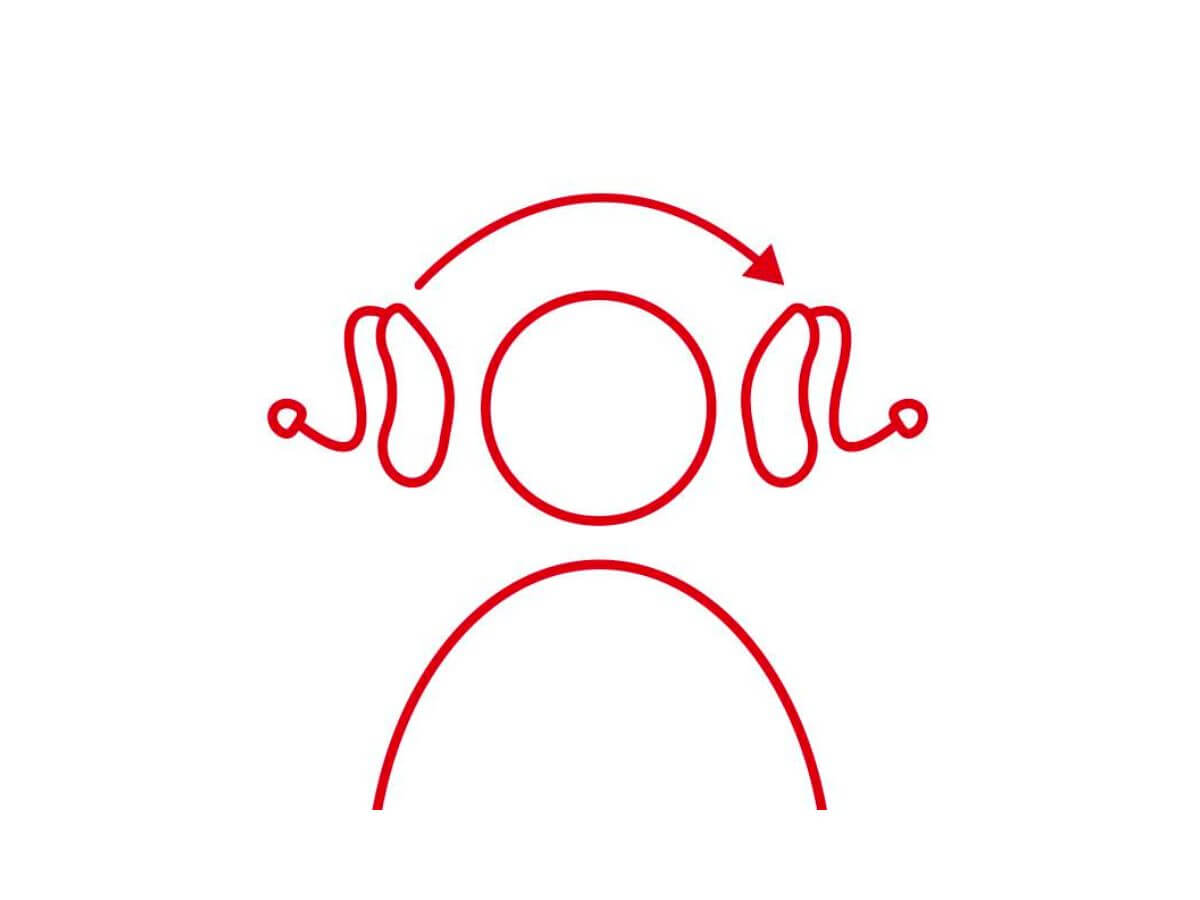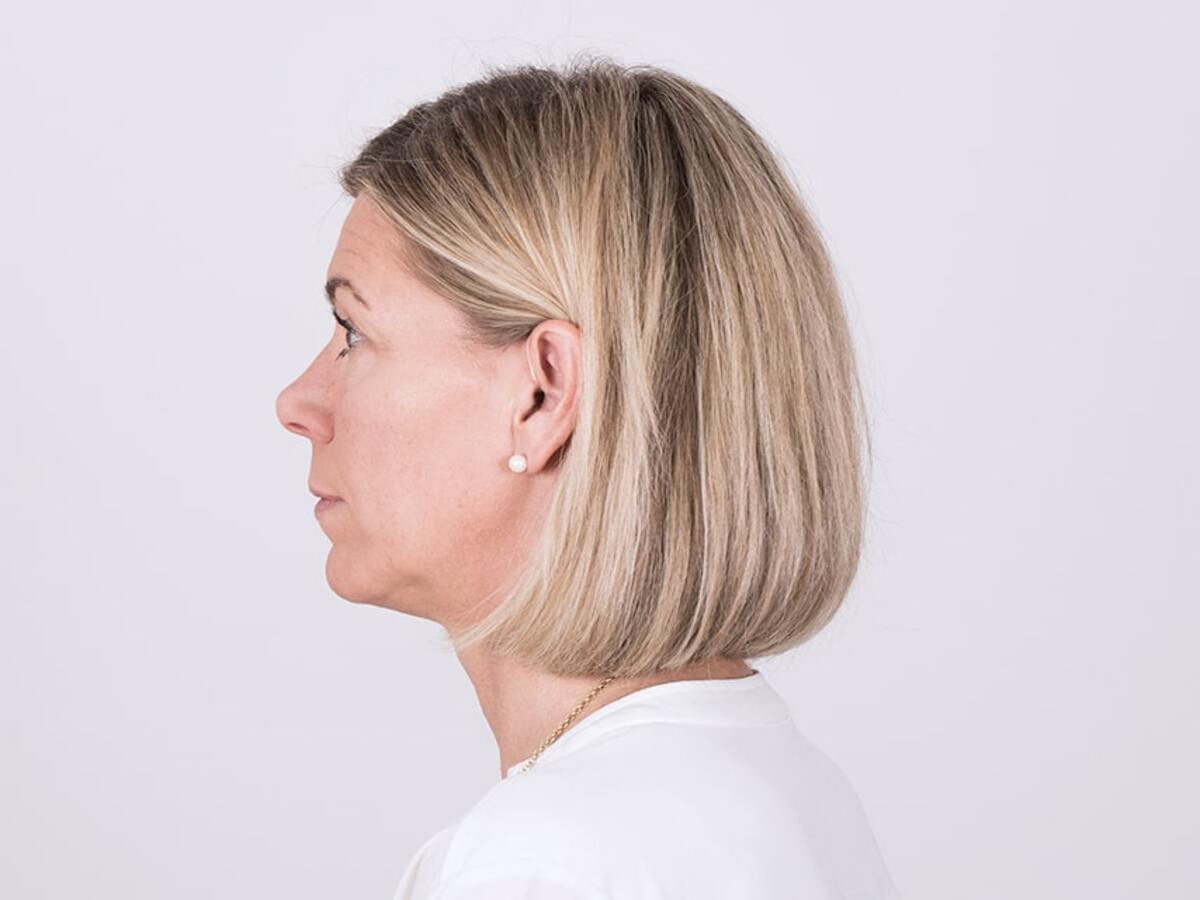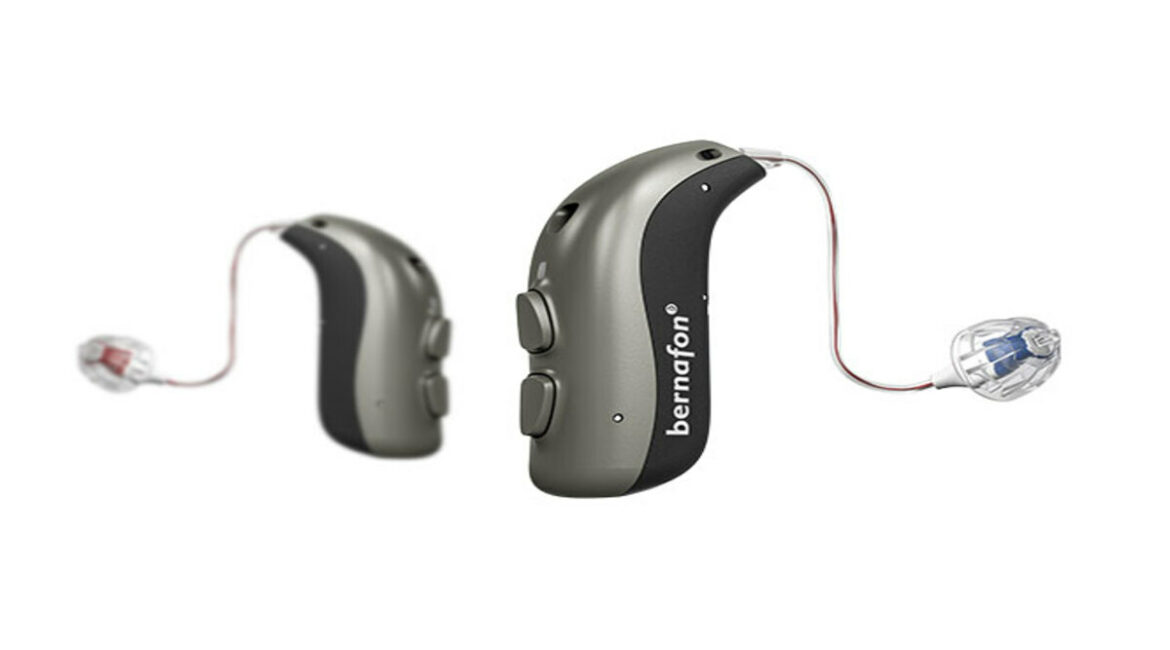Image via bernafon.com
Some individuals have such poor hearing in one ear that conventional hearing aids are ineffective.
Your skull physically prevents a sound from reaching your good ear with normal hearing if it is on the side of your bad ear. This phenomenon, known to audiologists as the “head-shadow effect,” usually affects consonants, the higher-frequency sounds crucial to interpreting speech.
In other words, it will be very challenging to tell “cat” from “hat” when you can only hear out of one ear. This is much more difficult in places with increased noise, including pubs and restaurants. Anyone with minimal hearing in one ear, often known as single-sided deafness or unilateral hearing loss, will find background noise an issue.
Just as many people accept the untreated hearing loss in both ears, many others choose to live with their hearing problems. They can request that others only talk positively of them. However, that isn’t a conclusive answer. They’ll still have problems finding the source of a sound and struggle in noisy environments like restaurants or events.
Fortunately, there are remedies available, from specialist headphones to surgical implants and hearing aids. The CROS hearing aids are specifically for those with single-sided deafness.
What Are CROS Hearing Aids
Contralateral Routing of Signals, or CROS, refers to a hearing aid technology with two components. The hearing aid in your better ear receives sound signals captured directly by the hearing aid in your poorer ear or deaf ear.
The two CROS devices function as a microphone and a transmitter instead of amplifying sounds just for the ear they are placed in, making them distinct from conventional hearing aids. You won’t miss any noises around you since all hearing signals from both sides of the head are being processed on your good side.
How Do They Work

Image via bernafon.com
The CROS system enables speech and sound from the less-acuate ear to be captured by a microphone and then sent to a hearing aid worn on the more-acuate ear. How does this apply to real-world circumstances?
Consider a situation when you are seated next to someone in a meeting, restaurant, or perhaps a car. It will be challenging to understand them if they sit on the side where you have the most difficulty hearing.
You could discover that you’re frequently moving your head to put your better-hearing ear closer to them. While helpful, this is not natural and may be very unsettling. You no longer need to shift your head so that your better side can hear them with CROS technology.
They may speak normally, and the CROS gadget’s microphone will pick up their sound, transfer it to the superior ear device, and restore your ability to hear in all directions.
Benefits of Using CROS Hearing Aids
People with single-sided deafness may now “hear” sound from their unaffected side thanks to CROS hearing devices. You shouldn’t worry as much about individuals speaking into your “good” ear during a discussion. This might help you feel like your hearing impairment isn’t a significant concern in your life and can make social interactions more natural.
Similar to how conventional hearing aids magnify sounds, they also help you become more aware of other sounds around you.
It’s essential to bear in mind that individuals with unilateral hearing loss frequently experience difficulties with “localization,” or being able to determine the source of a sound. This can occasionally persist even after using these hearing aids, which can be annoying (particularly in environments with lots of background noise).
It could take some time to get used to these hearing aids since they may feel weird. To give your adjustment the most incredible opportunity, it’s crucial to wear your hearing aids as often as you can.
Drawbacks to CROS Hearing Aids
It’s crucial to understand that CROS hearing aids require some getting accustomed to and that they won’t completely address a person’s hearing issues. For instance, they do not enhance the “localization” of sound; a person may still not be able to determine the source of a sound.
This can be incredibly annoying in a setting with a lot of ambient noise because the devices will amplify it.
Best Price for CROS Hearing Aids in Singapore

Image via bernafon.com
Customers seeking CROS hearing aids in Singapore may get expert guidance and top-notch products from J Glasses and Hearing. Schedule your hearing evaluation to find out if CROS is correct for you. Our hearing care professional is dedicated to meeting your demands with reasonable prices.
There are many types of hearing aids J Glasses is offering, contact us today to get your hearing aids.

